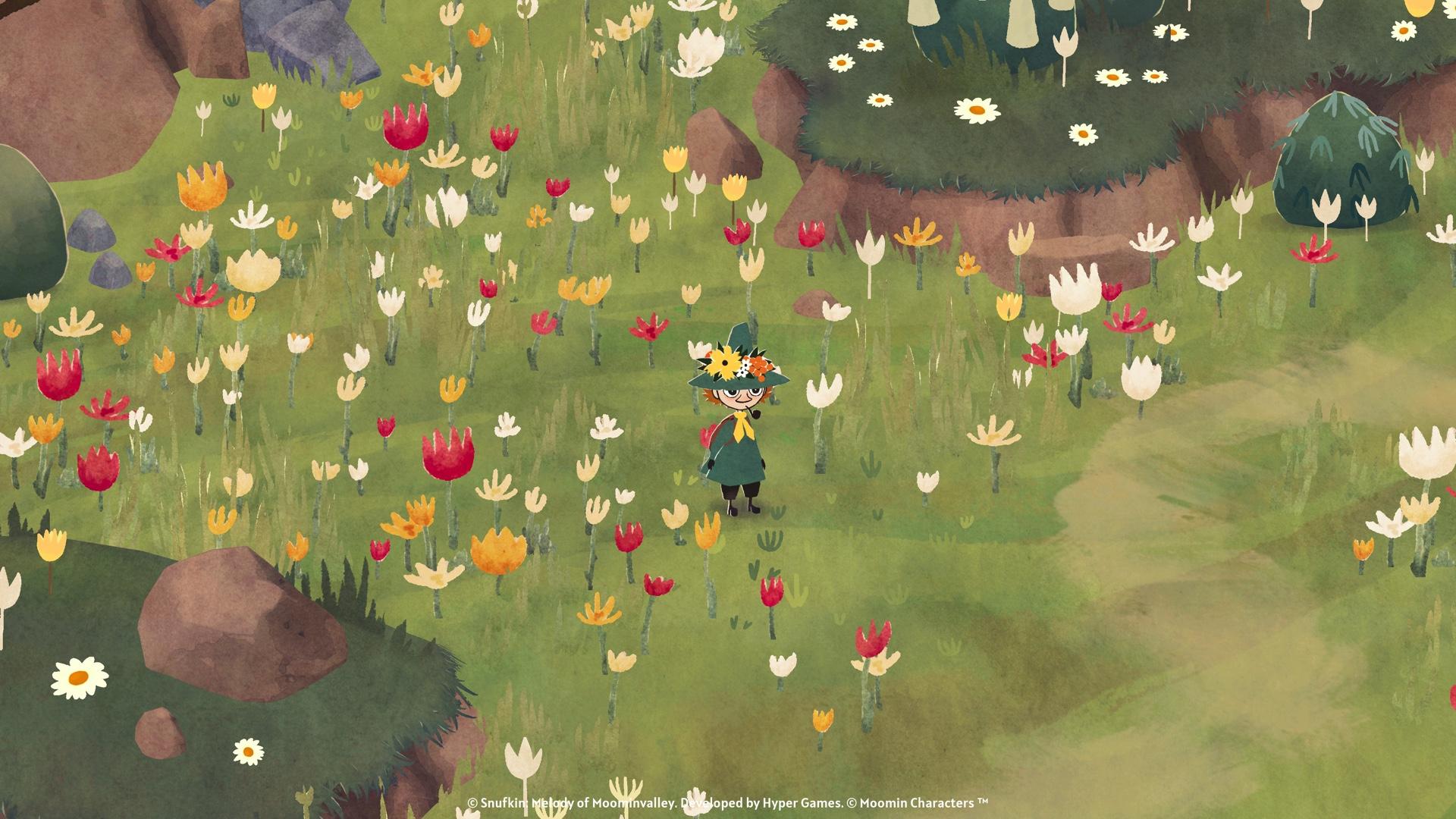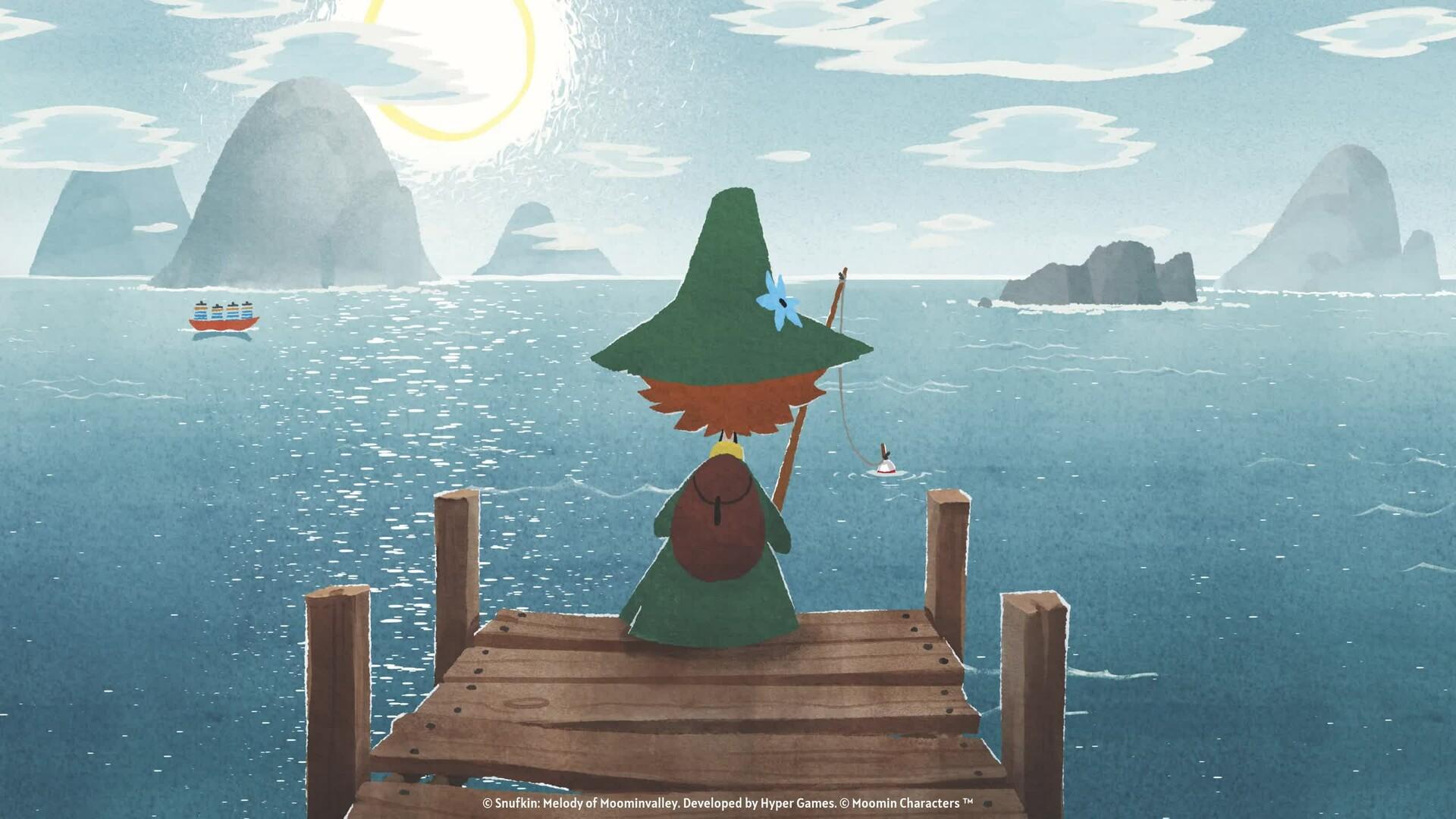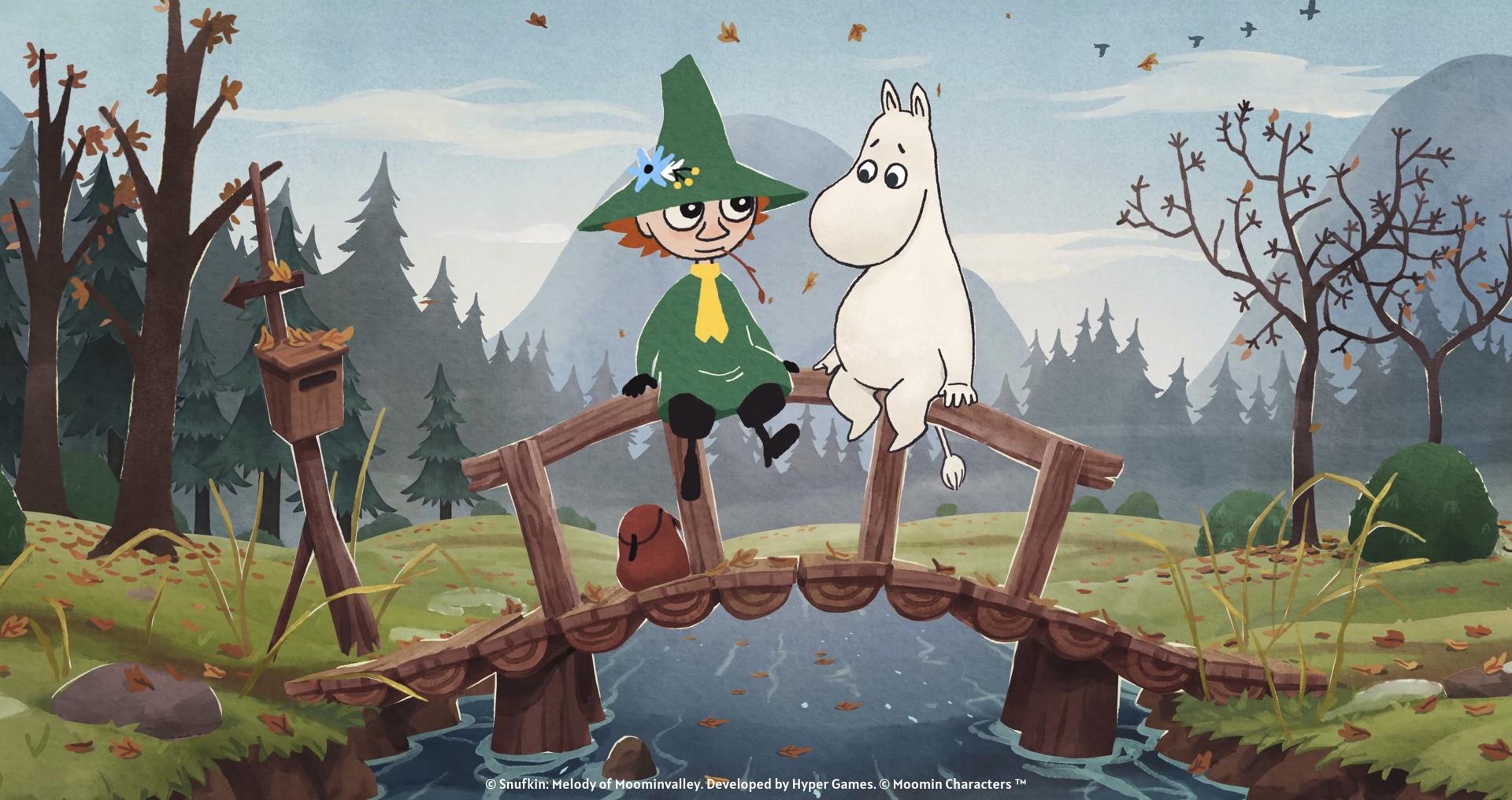
by
Lee Mehr
, posted 12 hours ago / 545 Views
Few qualities in fiction are as deflating as recognizing where a story will go with no surprise in between. Perhaps that’s a bit unfair on developer Hyper Games (Morkredd); after all, this is adapting Finnish author & illustrator Tove Jansson’s Moomins series, so there’s already an established ethos to be respected. In a way, it’s similar to our titular hero: Snufkin egresses Moominvalley before winter arrives and then returns at the dawn of spring. There’s a certain tempo to follow that keeps in line with the spirit of the children’s books. What’s missed with Melody of Moominvalley is that the destination having a constant – a North Star – poses no issue so long as the journey feels surprising and adventurous.
The first leg of Snufkin’s return sets those building blocks in place – perhaps a bit too neatly. There’s an established tension between Snufkin and his best friend Moomintroll at the start: the undesired-yet-expected separation for the coming winter. It’s emphasized in the opening cutscene as a dreaded cycle, but Snufkin’s sojourn away only lasts a couple of minutes before the opening tutorial segment. This time, his return is abruptly greeted by wrought-iron fences rather than rolling fields, as the industrious Park Keeper has different plans for this secluded hamlet. And with Moomintroll nowhere to be found, one can’t help but suspect the two are connected.

The aforementioned tutorial introduces the broad strokes of Melody’s template: an isometric adventure with bouts of stealth and puzzle-solving. The Park Manager’s unwelcome “renovations” are guarded by police officers; their means of properly defending the park also include the authoritative signposts within it. Once you rip out all of them, so goes everything else: the exterior walls, stepping stones, and so on. The logic is rather fuzzy – even by family-friendly standards – but the symbolism of revitalizing nature by removing these obstructions does enough to paper over that. It’s essentially blending “nature abhors your rules, man!” as a battlecry alongside a more approachable environmentalism for a young audience.
The logic of other gameplay elements isn’t quite as easy to wrestle with. I can understand an E-rated adventure utilizing rudimentary line-of-sight (LoS) stealth detection, but they didn’t need to scale back the tension so much. Officers that detect you will immediately give chase if you’re in their vision cone, but quickly downgrade their suspicion when LoS is broken before swiftly returning to their post; should you get caught – improbable as that may be, Snufkin is just gracefully plopped to the starting line as though nothing happened. But perhaps the oddest stealth concept is lightning strikes temporarily disabling officers’ vision cones, as though they have to reboot. The logic of their vision being obstructed by tall grass is an industry standard, but that 9th-inning nuance makes no sense.

The “melody” in Melody of Moominvalley comes from the music required to sonically command animals into various actions. From the start, Snufkin’s harmonica acts as a means to rhythmically awaken songbirds to hold a tune, excite ants into deconstructing their mound, and more so as to reach new locations or acquire certain items. Later-acquired instruments like the flute and drum are used to lull or awaken certain animals to use as viable platforms. Although the logic between requiring a harmonica or a drum to destroy a particular mountain of sand is hazy, most uses between this musical triptych make intuitive sense. Between acquiring new instruments and slowly leveling up Snufkin’s musical expertise, it’s like a quasi-Metroidvania.
Even hedging my words with “quasi-Metroidvania” gives too much credit for what’s a rather barebones and boring example of one. I mean, fair, Moominvalley does have designated roadblocks with various instrument & music level prerequisites; further, magic musical notes that incrementally increase your level can be acquired through completing quests and simple exploration. Excepting combat, it does capture the tenets of a Metroidvania in limited respects. The issue is it’s implemented in such a boring fashion. Outside of a rare instance of creatively using Snufkin’s music, most interactions of platforming and puzzle-solving are stale and repetitive. It never leaves first gear outside of the rare one-off concepts.

That paucity of intrigue and creativity also invades its ho-hum story. Even while respecting this as an ‘almost-adaptation’ of a beloved children’s book, there’s something about how this series of events transpires that feels too run-of-the-mill. And because the alleged tension of finding Snufkin’s best friend and restoring the valley to its former glory is so predictable, the modest five-hour runtime feels protracted as you’re mentally so far ahead of it. Even after respecting it as a kid-approachable tale, recent titles like Neva and The Plucky Squire find ways to be more narratively engaging.
There’s nothing to grab onto except for its varied cast of quirky characters. Presentation is half the battle as they say, so at least Hyper Games fared better with respecting the source material. Melody’s meshing of 2D paper cut-out characters within a 2.5D world is reminiscent of the Don’t Starve games, though with a brighter tone and watercolor backgrounds. The varied cast of human and anthropomorphic characters captures the kind of warmth fit for a book your kindergarten teacher would read aloud. Perhaps its best artistic quality is the roughness within many of its backdrops: the hand smears or smudged eraser marks while stenciling and coloring the Nordic landscape. You can find similar touches of inspiration in Oda Tilset’s soundtrack (in collaboration with Sigur Rós), but most of these pleasant melodies eventually blend together and sound repetitive.

Perhaps it’s a testament, then, to Tove Jansson’s series that when grinding through Snufkin: Melody of Moominvalley’s weakest parts it never feels unpleasant; that said, the phrasing of that “compliment” speaks volumes all on its own. I understand how its childlike warmth could carry the experience; there’s a breeziness to completing this or that quest. The issue is that how it’s strapped to narrative and game design is so wholly predictable. Nary did a moment from the opening cutscene to the end credits feel as though it ever wanted to creatively challenge either itself or the player. Everyone eventually gets bored of hearing the same song on repeat.
Contractor by trade and writer by hobby, Lee’s obnoxious criticisms have found a way to be featured across several gaming sites: N4G, VGChartz, Gaming Nexus, DarkStation, and TechRaptor! He started gaming in the mid-90s and has had the privilege in playing many games across a plethora of platforms. Reader warning: each click given to his articles only helps to inflate his Texas-sized ego. Proceed with caution.
This review is based on a digital copy of Snufkin: Melody of Moominvalley for the XS





































